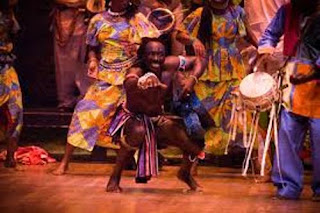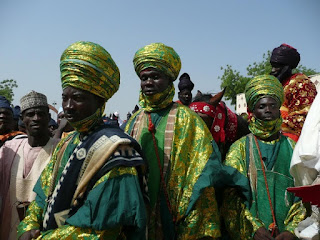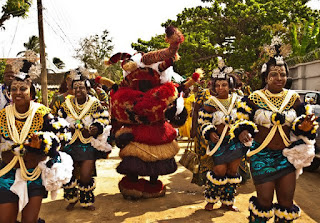WHAT YOU DON'T KNOW ABOUT AFRICAN DANCE
African Dance is a high-spirited, fun, high-powered rhythmic dance experience for anyone who loves to dance.
Dancing is an important aspect of African life. Throughout the varied countries of that vast continent, dance is used not only as a form of recreation and entertainment, but more important, it teaches social patterns and values to the members of the community.African dance has traditionally played an essential role in the culture of the tribes. Much more than entertainment, dances communicate emotions, celebrate rites of passage, and help strengthen the bonds between members
of the tribe as a whole.
Introduction
African dance mainly refers to the dance forms of ‘Sub Saharan Africa’ and it is performed mainly by different indigenous tribes. Each dance type is distinctly not the same as the other because of cultural differences in melodic and movement styles. Most of the African dance forms exhibit the social pattern prevalent among local tribes. These dance forms depict the life span forms of the community more than that of individuals or couples. Just about all African dances are accompanied by constant rhythmic music that typically includes the continual beating of different types of drums, vocals and stomping of the feet.
Significance
Dancing plays a significant role in tribal life in Africa. In addition to being a unifying activity for community members, dance is often an expression of spirituality in tribal religious rituals. Africans dance to celebrate a birth or a marriage, to pray for prosperity and better crops or to ward off danger and disease.
Types of the African Dance
It’s
undoubtedly true, that there exist all kinds of dance styles owing to the
different tribes residing in Africa. However, a majority of options are based
on similar principles.
Warrior Dances
The dancing style is credited to possess originated from the Foh and Ewe people, and it is widely known as Atamga. Warrior dances really are a depiction of the men who fought within the battle, which is why the dance involves warfare movements. It’s supposedly an aggressive style of dancing and it is characterized by a complex drum rhythm. The dancers stage mock fights using horsetail as spears to stab the opponent. It’s performed specifically at cultural events and at funerals. The Agbekor dance style is definitely an example of this dance type.
Dance of Welcome
Welcome dances are performed to greet and pay due respects to some visitor. It is also one of the ways to showcase the talent and potential of the tribe towards the visitor. The Yabara performed in West Africa is definitely an example of this dance type. It calls for throwing the shekere to different heights in the air and it is mostly performed by women.
Dance of Love
The name says everything, the dance is a depiction of love and it is performed on occasions celebrating unison and love. Being celebratory anyway, the performances are restricted to weddings, anniversaries and tribal rituals. In Ghana, women carry out the Nmane to honor the bride at the time of the wedding.
Rite of Passage
‘Coming of age’ is considered to be one of the most important ritual amongst the African tribes. This type of dance is conducted as an act of initiation up. This dance is performed specifically through the young dancers who practice in seclusion for months before they get to perform in front of the community. This dance is really a means to boost the confidence of the young men and women and also a means to welcome them in to the new phase of life.
The Maasai people carry out the Adumu dance to celebrate the coming of age of warriors. The dancers need to jump without allowing their heels to the touch ground. Tokoe, on the other hand, is a dance done by selected young women in Ghana. Girls chosen for the dance have to satisfy the required qualification measures, namely remaining a virgin at that time of entering puberty.
Types of Dance Styles
Yabara dance
Yabara
is dance form from Nigeria or even the western African region. In this dance,
“The Beaded Gourd Rattle” called Shekere in native language, is added to the
air to indicate the rhythm changes.
Agbekor dance
This dance is originally the dance
of ‘Ewe’ and ‘Foh’ tribes from western African region. This dance is peculiarly
performed with horsetails, in the times of funerals.
Adumu dance
The Maasai people perform their
traditional dance called ‘Adumu’. This dance is conducted at the coming of age
ceremony of the warriors.
Kpanlogo dance
This African folk dance is one
of the Ga ethnic group from Ghana. This dance is conducted with certain
conga-like drums which are called Kpanlogo. The dance is also referred to as
African drum dance.
Umteyo dance
This dance is also referred to as
shaking dance, because the dance involves peculiar movement of the pectus
region of your body. This dance is specifically done by the South African Xhosa
tribe.







Comments
Post a Comment
Please leave your comments with us to enable us serve you beter